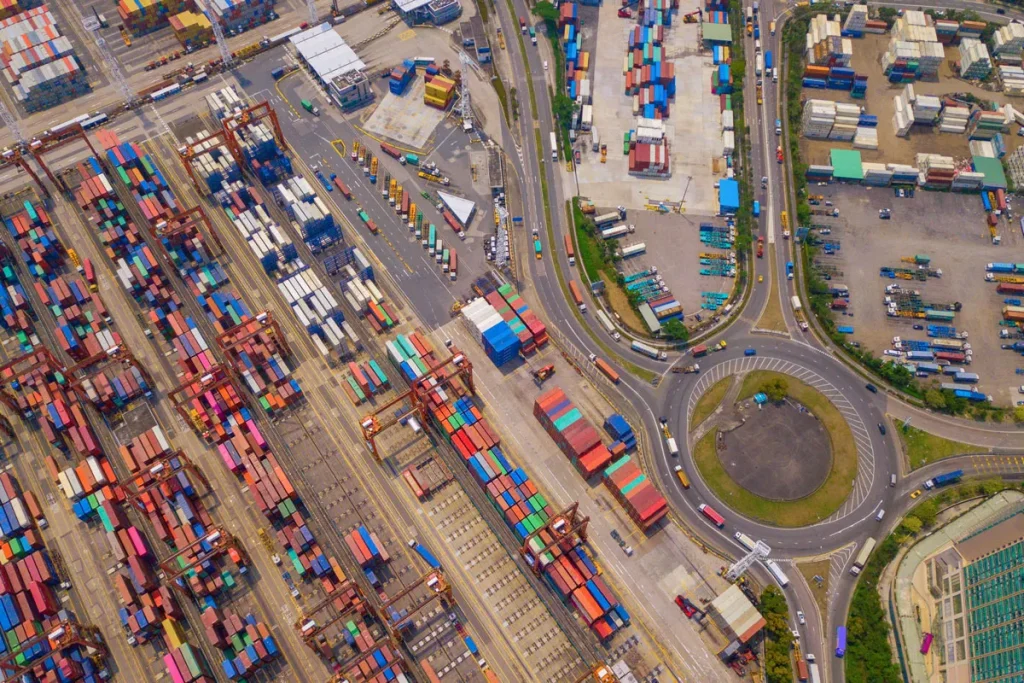Dry ports play a vital role in freight transport systems, facilitating the integration of different transport modes and promoting operational efficiency. In both Italy and Europe, the need for a structural reform of dry ports has emerged in response to current challenges related to intermodality, sustainability, and international competitiveness. This article explores the current state of reforms, their implications, and future prospects for the sector.
The Current Context of Dry Ports in Italy
According to the Italian Ministry of Infrastructure and Transport, there are currently 24 operational dry ports in Italy, including those in Bari, Bologna (Bentivoglio), Catania, Cervignano del Friuli, Jesi, Livorno (Guasticce), Maddaloni, Mortara, Nola, Novara, Torino (Orbassano), Orte, Padova, Parma (Fontevivo), Pescara (Manoppello), Portogruaro, Prato, Rivalta Scrivia, Rovigo, Trento, Trieste (Fernetti), Vado, Venezia, and Verona. These infrastructures play a crucial role in enabling modal shift and interconnecting transport networks, making a significant contribution to the efficiency of the national supply chain.
The Need for Reform: Goals and Challenges
Law no. 240 of 1990 was the first attempt to regulate the dry port sector in Italy. However, the evolving logistics context and new market demands have made it clear that a regulatory update is needed. The draft law A.C. 703, introduced in 2023, aims to modernize the legal framework, promote intermodality, and improve the efficiency of logistics flows.
Key Objectives of the Reform
-
Clear Definition of Dry Ports: Establish precise criteria to identify and classify dry ports, distinguishing them from other logistics infrastructures.
-
Entrepreneurial Management: Promote management based on efficiency and competitiveness, with operators functioning under private law frameworks.
-
Integration with the Port System: Strengthen synergies between dry ports and seaports, improving connectivity and the overall performance of the logistics system.
-
Environmental Sustainability: Encourage operational practices that reduce environmental impact, aligning with EU decarbonization goals.
Challenges in Implementation
Despite its ambitious goals, the reform faces several challenges:
-
Infrastructure Investment: Modernization requires substantial investments to upgrade existing facilities and build new ones.
-
Institutional Coordination: Close collaboration between the central government, regional authorities, and local entities is essential for effective implementation.
-
Resistance to Change: Concerns have been raised regarding potential privatization of dry ports and the transformation of surface rights into property rights without public tender processes.
Recent Initiatives and Future Developments
Several initiatives have been launched in recent years to support the development of dry ports:
-
FVS-ELODIE Project: Promoted by Unione Interporti Riuniti (UIR), this initiative aims to improve technological efficiency in Italian dry ports by equipping them with advanced technologies and enhancing interoperability.
-
Digitalization Funding: The government has allocated significant funds for the digitalization of dry ports, recognizing the importance of modern, technologically advanced infrastructure.
-
Growth in Intermodal Traffic: Certain dry ports, such as Nola, have recorded strong growth in intermodal traffic, indicating a positive trend in the sector.
The European Context: Reforms and EU Initiatives
At the European level, dry ports are considered key components in the development of the Trans-European Transport Network (TEN-T). Regulation (EU) 2024/1679, adopted in June 2024, outlines the EU’s guidelines for developing the TEN-T network, emphasizing the importance of efficient and sustainable logistics hubs.
Goals of the European Reform
-
Cross-Border Coordination: Foster cooperation among Member States to ensure interoperability and efficiency along European transport corridors.
-
Sustainability and Digitalization: Promote green technologies and digital solutions to enhance operational performance and reduce environmental impact.
-
Multimodal Integration: Facilitate integration between different transport modes to improve connectivity and accessibility of logistics hubs.
Challenges and Opportunities
Implementing EU directives requires significant adaptation by Member States, both in governance and infrastructure capacity. EU funding from the Connecting Europe Facility (CEF) is a strategic resource to support investments in logistics nodes. However, countries like Italy must submit integrated projects aligned with EU environmental and intermodal goals.
Another challenge is the lack of standardized criteria for classifying and recognizing dry ports at the European level. This absence complicates policy harmonization and cross-border cooperation. Nonetheless, the transition to digital and sustainable systems offers valuable opportunities to boost the competitiveness of the overall European logistics network.
PortaleGenio and Dry Ports
Within this context, PortaleGenio focuses specifically on dry ports through its app, dedicating exclusive space and positioning itself as a potential tool for implementing EU principles of integration and sustainability.
Thanks to its interactive maps, PortaleGenio enables operators and decision-makers to:
-
Analyze the network of Italian and European dry ports
-
Identify active connections
-
Simulate intermodal routes to evaluate more sustainable operational alternatives
-
Access a directory of over 700 companies in the sector to foster B2B collaboration
The platform is not just an informational tool—it acts as a strategic and cultural accelerator, helping businesses embrace the intermodality paradigm and supporting the implementation of dry port reform.
Conclusions
The future of dry port reform in Italy and Europe is closely linked to the logistics system’s ability to respond to global challenges with integrated, smart, and sustainable solutions. Intermodality is no longer optional—it is essential for tackling climate change, infrastructure congestion, and the growing demand for competitiveness.
Italy and Europe are at a strategic crossroads: either invest in coordinated infrastructure, digitalization, and governance, or continue with a fragmented approach that risks slowing down the entire continental logistics system.
Initiatives like PortaleGenio could play a key role in turning reform into a concrete opportunity—building a logistics future capable of meeting today’s most pressing challenges: more connected, more efficient, more sustainable.
Sources
- MIT – Interporti in Italia
- Camera dei Deputati – Dossier A.C. 703 Riforma Interporti
- UIR – Progetto FVS-ELODIE
- Port Technology & EU TEN-T Regulation 2024
- Supply Chain Italy – Digitalizzazione degli interporti
- PortoeInterporto.net – Interporto di Nola

